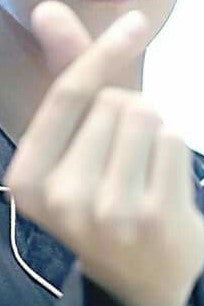When all else fails ... Update October 19 2015
When all else fails ... read the instructions. And if the instructions aren't clear enough, write or call for more information.
From the very beginning, we knew that our Baptist Fan template would be more challenging for some quilters than for others, even some who were experienced with quilting rulers and templates.
Knowing this in advance, TopAnchor Quilting Tools has gone to great lengths to help quilters get the best results by providing videos and printed instructions, plus email and phone support (our contact information is on the instruction sheet and website).
Taking the time to read and follow the instructions is necessary for using any new tool, and especially for one that is so different. With some comments we recently saw on a blog, we realize that more clarity is needed.


“Have to go underneath to fasten the pins.”
One of the primary features of TopAnchor Quilting Tools' unique anchor post & pin is that it can be fastened to the top of the quilt without needing to reach underneath. This is shown quite clearly in the directions (with diagrams) included with every template.
This video shows in great detail how the anchor post and wafer are fastened in place.
The following two screen shots are from our video TopAnchor Quilting - Baptist Fan rotating template demonstration, which can be found on our website and youTube (or by just clicking on the link).
The picture below shows both hands on top of the quilt while fastening the anchor post in place.
 By the way, the prong does not have to go completely through all the layers of the quilt. Simply going through the top and part of the batting is just fine. The stabilizer pin is what holds the anchor post in place and as long as the pin is snug against the prong, the anchor post won't come out until the stabilizer pin is removed.
By the way, the prong does not have to go completely through all the layers of the quilt. Simply going through the top and part of the batting is just fine. The stabilizer pin is what holds the anchor post in place and as long as the pin is snug against the prong, the anchor post won't come out until the stabilizer pin is removed.
The directions (including a detailed diagram) in the package with the template show how to move to the next set of arcs for continuous sewing without cutting the thread. (“Walk to the starting point of the next arc.”) This 'walking' action is also shown clearly in the videos posted on our website and youTube.
“Pivot point is not stable enough.”
While any quilting ruler or template is rigid, the quilt is very flexible and can stretch in any direction. That’s why it’s important to hold the ruler or template in place with one hand while quilting, usually with the hand resting on the template and the tips of a few fingertips resting on the quilt. This is a standard technique and usually one of the first learned when beginning to machine quilt with rulers.
Our Baptist Fan template is different in that it is moved with one hand while the machine is moved with the other. It takes practice to move both hands in different directions at the same time, but most people can learn to control both and get beautiful results. Practice is the key.
Although we can't really do much to control the flexibility of the quilt itself, we were able to design a small wafer to place underneath the anchor post and give the template a more stable base to rest and move on. The wafer also tightens the anchor post and helps prevent wiggle of the template. It makes the template more stable but unfortunately can't make the quilt less flexible.
“I don't know if the pin holes will go away.”
The anchor post prong and stabilizer pin are just standard 1” T-pins. The holes made in the quilt are no larger or permanent than any regular straight pin would make. In fact, these pins are much smaller than the needles used in a sewing or quilting machine and make smaller holes.
The picture below shows the prong on the bottom of the anchor post. Note the small bend in the middle of the prong. This bend is where the stabilizer pin crosses to hold the anchor post in place.

The next picture shows a comparison of the 1" T-pin with a standard No. 16 longarm needle.

The last photo shows the underside of the quilt with the anchor post and stabilizer pin in place; the bottom of the quilt is smooth and flat with nothing sticking out to scratch the machine or interfere with stitching.

Would you like more information?
If you still have questions, let us know. We try to be helpful and give the best customer service we can. You can write to me at Betty@TopAnchorQuilting.com or call me at the number listed on the website menu under Contact Us. Our contact information is also on the instruction sheet that is packaged with every template.
Additional notes since the original post:
--- The tool I use to help guide the foot is a small generic template with a curved side. They are widely available from many websites or quilting stores.
--- Longarm templates from TopAnchor Quilting now include a wafer to slide under the anchor post to give more stability to the template.
Happy quilting!
Betty



